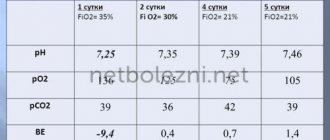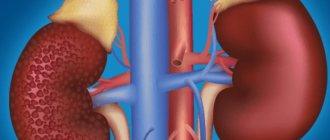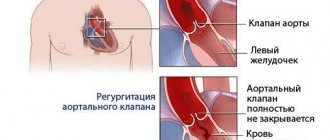Home / Cardiologist / Treatment of vascular insufficiency
Vascular insufficiency is a phenomenon that is associated with the pathology of the circulatory system due to deterioration in the tone and elasticity of blood vessels, as well as problems with the passage of blood through them and directly with the amount of blood itself. As a result of a decrease in blood flow speed, the transport of oxygen and nutrients across cell membranes is disrupted. Hypoxia develops and the functioning of cells and tissues is disrupted.
Pure vascular insufficiency is rare; most often, heart muscle insufficiency occurs simultaneously with symptoms of vascular insufficiency.
Types of vascular insufficiency
Based on localization, vascular insufficiency can be divided into: regional (affecting a specific part of the body) and systemic (affecting the vessels of the whole body).
According to the speed of formation and progression, acute and chronic vascular insufficiency are distinguished.
- Acute failure develops when there is a sharp drop in the level of pressure in the vessels, for example, with cardiogenic shock due to myocardial infarction. Characterized by the development of collapse due to a pronounced drop in blood pressure.
- Chronic failure develops over time when blood pressure drops below 100/60 mmHg. This concept includes a wide group of diseases: thrombophlebitis, vertebrobasilar insufficiency, coronary heart disease, mesenteric vascular insufficiency and other conditions accompanied by ischemia. Chronic vascular insufficiency can be primary (develops when the activity of the autonomic nervous system is disrupted) and secondary (due to various diseases).
Classification
There is a classification of CHF according to the stages of development of the disease (N.D. Strazhesko, V.Kh. Vasilenko):
Stage I (initial) - signs of deficiency appear only during physical activity, there are no symptoms at rest.
Stage II is divided into two periods:
- period A – clinically pronounced disorder of the right or left side of the heart, congestion in the pulmonary or systemic circulation, shortness of breath and symptoms occur with little physical effort;
- period B – stagnation in both circles of blood circulation (manifested by shortness of breath, swelling), performance is sharply reduced.
Stage III (final) - changes in the structure of organs and tissues, due to impaired blood supply and trophism, shortness of breath at rest.
The severity of the disease is determined by the functional class (FC), which shows how limited the patient’s physical activity is.
- I FC - no restrictions on physical activity. Normal physical activity does not cause excessive shortness of breath, fatigue, or palpitations;
- FC II - minor limitation in physical activity. Feel comfortable at rest, but normal physical activity causes shortness of breath, fatigue, or palpitations;
- III FC is a clear limitation of physical activity. Feeling comfortable at rest but doing less physical activity than usual causes excessive shortness of breath, fatigue, or palpitations;
- IV FC - inability to perform any physical activity without discomfort. Symptoms may be present at rest. With any physical activity, discomfort increases.
The disease should not be allowed to develop; timely diagnosis will help prevent the occurrence of pathology. Our cardiology center of the Federal Scientific and Clinical Center of the Federal Medical and Biological Agency invites you to undergo a comprehensive heart examination. Timely identification of the cause of heart failure and its treatment will help maintain your quality of life.
Causes of vascular insufficiency
The acute variety occurs in various cardiac pathologies, massive blood loss, poisoning, severe infections, adrenal insufficiency, organic damage to the nervous system, extensive burns, traumatic brain and general injuries.
The root causes of the chronic form are autonomic and neurological factors, organic lesions of the brain stem and heart, in which there is hypotension with constant low blood pressure and, as a consequence, constant systemic hypoxia of organs and systems, the impossibility of adequate tissue perfusion with increasing consumption due to stress.
Diagnostic methods
The state of vascular tone and cardiac muscle can be judged based on the examination results:
- measurement of blood pressure - the upper level (systolic) is used to judge the muscular strength of heart contractions and ejection; the lower level (diastolic) is used to determine the amount of vascular tone or resistance;
- registration of central venous pressure - a decrease indicates low tone of the vascular bed;
- volume of circulating blood - the technique, if the volume is insufficient, allows one to judge the degree of blood loss or the deposition of blood in dilated capillaries;
- An ECG reveals signs of myocardial overload, the degree of hypertrophy;
- Cardiac ultrasound can quantify the correct flow of blood through the chambers of the heart.
Venous pressure is measured by inserting a catheter into the subclavian vein
Symptoms of vascular insufficiency
Manifestations of vascular insufficiency depend on the type of insufficiency.
Acute vascular insufficiency
- Collapse – develops with a sharp decrease in blood pressure. It develops suddenly, when within a few seconds a person begins to feel severe weakness, noise in the head, dizziness, and the appearance of a “veil” before the eyes. The man loses consciousness. The patient's skin is pale, cold, breathing is rapid and shallow.
- Fainting – develops with a sudden disruption of cerebral circulation. The patient loses consciousness for several seconds or minutes, followed by darkening of the eyes, ringing in the ears, and severe weakness.
Chronic vascular insufficiency
Has signs of ischemia of organs and tissues, which has not clearly expressed signs:
- Cold extremities
- Blue discoloration of soft tissues in the periphery (fingertips, nose, earlobes)
- Trophic disorders (loss and fragility of hair, nails, loss of turgor and elasticity of the skin)
- Reduced pain and temperature sensitivity
- Weakness in the limbs, especially after exercise
- Muscle wasting
- Fast fatiguability
- Chronic cerebrovascular insufficiency is manifested by frequent headaches, dizziness, clouding of consciousness, decreased memory, attention, and ability to concentrate
- Chronic mesenteric ischemia is manifested by symptoms of dyspepsia (nausea, vomiting), abdominal and epigastric pain
Diagnosis and assistance
When treating pathologies of the cardiovascular system, doctors conduct a thorough diagnosis of the patient and provide qualified assistance according to the identified problems.
Diagnostics
The main diagnostic measures in the development of a pathological condition are aimed at examining the patient, assessing his symptoms and determining the form of deficiency. To give an accurate conclusion, a specialist studies the person’s history and determines what factors could lead to the pathology. After assistance is provided, the patient is sent to a hospital, where examinations of the circulatory and cardiac systems are prescribed:
- ECG;
- phlebography;
- auscultation (listening) of arterial vessels;
- sphygmography, etc.
Our clinic has all the necessary equipment for diagnostics, which allows us to accurately determine the etiology of the pathological process.
First aid
Help for acute vascular insufficiency should be provided without delay. If you faint, do the following:
- the person is laid horizontally;
- loosen the collar of clothing for air access;
- splash your face with water;
- give ammonia to smell;
- call an ambulance.
Upon arrival, the doctor injects the patient with caffeine or adrenaline and then admits him to a medical facility. If shock develops, it is necessary to urgently take the person to the hospital. The faster his resuscitation is performed, the lower the risk of death. If necessary, stop the bleeding and carry out other procedures, focusing on the reasons that led to the attack.
Diagnosis of vascular insufficiency
To the extent that the symptoms of vascular insufficiency are not always pronounced, to clarify the diagnosis of the pathology and then select the optimal treatment regimen, the patient will need to undergo several types of examinations. Among them:
- Orthostatic test. Control of pressure in a state of activity, passivity, when changing body position.
- Plethysmography. Necessary for determining vascular tone.
- ECG diagnostics. It is carried out to identify pathologies of the heart muscle in hemodynamics.
- Ultrasound diagnostics of the heart. Allows you to determine the need for treatment of existing heart diseases.
A comprehensive diagnosis will reveal the cause-and-effect relationship between symptoms and characteristics of the disease, which in turn will allow the doctor to choose the right treatment regimen and effective prevention methods in the future.
How are the heart and blood vessels connected?
Normally, the heart acts as a pump, pumping blood through the force of the myocardium. One contraction pushes up to 80 ml of blood into the aorta, about 5 liters per minute. But the heart does not rest, so it has to pump up to 7000 liters per day.
Arterial vessels contain 15% of the blood flow. The smallest ones (arterioles) carry oxygen to the tissues. They can redistribute blood due to spastic contraction: then a state of ischemia will arise in the tissues, and excess blood will be discharged into the veins through arteriovenous shunts. If the tone of the arterioles leads to the expansion of the lumen, then the blood supply increases.
The body has its own tone regulators:
- impulses from the nervous system and hormonal substances (adrenaline and norepinephrine, angiotensin-2, serotonin);
- oxidation products.
This natural mechanism is reflexively triggered during stress, when the bulk of blood flows from the central vessels to the peripheral ones.
There are toxic poisons and medicinal substances that have the same property.
Even smaller vessels - capillaries - deliver blood cells to the cellular level and wash out waste substances, collecting them into the venous system. They contain 12% of the blood mass. But with loss of tone, the volume increases significantly.
The main blood (up to 70%) collects in the veins; they independently adapt to the amount of blood received. Flow into the right atrium through the vena cava system is regulated by central venous pressure.
The pressure in the veins increases when:
- heart failure;
- mechanical obstruction of further outflow to the lungs (pulmonary artery thrombosis);
- excess fluid in the body.
Decreases when:
- severe blood loss;
- decreased tone of arteries and veins on the periphery (due to the outflow of their center);
- loss of fluid with vomiting, diarrhea, sweat.
Arterial vessels are shown in red, venous vessels in blue.
Increased peripheral vascular tone leads to a sharp increase in the load on the myocardium. Due to increased peripheral resistance, it requires additional effort to push blood.
A decrease in capillary tone with expansion of their lumen causes retention of the bulk of blood. The heart does not receive the required volume, and the coronary vessels stop supplying the muscle with oxygen.
Such interdependence in diseases with dysregulation contributes to severe consequences and does not disappear on its own.
Treatment of vascular insufficiency
The key treatment for vascular insufficiency over the past few years has been the administration of angiotensin converting enzyme inhibitors. This group of drugs dilates arteries, reduces peripheral vascular resistance, helps restore the function of their inner lining, and facilitates the work of the heart. If symptoms of vascular insufficiency develop against the background of the diagnosis of another pathology, the main treatment should be aimed at eliminating the root cause.
The best prevention of vascular insufficiency is the prevention of diseases that can cause it. It is recommended to monitor the condition of blood vessels, consume less cholesterol, and undergo regular examinations of the circulatory system and heart. In some cases, hypotensive patients are prescribed a prophylactic course of blood pressure-maintaining medications.
In our Medical City Alexandrov, the appointment is conducted by an experienced cardiologist, a high-class specialist who will conduct a comprehensive diagnosis of the disease and prescribe the necessary treatment.
By contacting us, you can be sure of a quality result!
To make an appointment with a specialist and find out all the details, please call: 8 (49244) 9-32-49
Therapeutic measures
Assistance for vascular insufficiency of any type should be provided to the patient immediately:
- the patient is placed in a horizontal position so that his limbs are slightly elevated;
- clothing that can compress the chest and abdomen is either removed altogether or unbuttoned;
- moisten a cotton swab with ammonia and wave it a little near the victim’s nose.
Treatment of vascular insufficiency involves the administration of the following synthetic medications:
- orciprenaline sulfate;
- sodium benzoate;
- mesatone;
- caffeine;
- ascorbic acid;
- glucose;
- strychnine.
If the primary cause is heart failure
Acute heart failure is characterized by 2 types of course.
Left ventricular failure
Left ventricular failure is a manifestation of the inability of the left ventricle to push a sufficient volume of blood into the bloodstream. Characteristic of myocardial diseases with a predominant focus in the left chambers of the heart:
- myocardial infarction;
- mitral valve disease, aortic-mitral stenosis;
- hypertonic disease;
- atherosclerosis of the coronary arteries.
Common lobar pneumonia contributes to heart overload.
Blood accumulates in the left atrium, and the ventricle is unable to pump it into the aorta. At the same time, the right ventricle continues to pump blood into the pulmonary circle. Due to overload, fluid moves into the lung tissue and causes swelling.
Symptoms:
- forced sitting position of the patient;
- cyanosis of the face, hands, feet;
- attacks of suffocation;
- cough with pink sputum;
- On auscultation, many moist rales are heard, bubbling breathing can be heard even without a phonendoscope at a distance.
The outcome depends on the state of vascular tone and blood pressure. With increased blood pressure (capillary tone is preserved), the patient has a greater chance of survival. If vascular insufficiency with atony is added, then the fight against pulmonary edema takes place in very difficult conditions with a complete lack of help from the body.
High arterial tone in the pulmonary circle is supported by diseases of the lung tissue and bronchi (asthma, emphysema, pneumosclerosis)
Right ventricular failure
Right ventricular failure occurs when the right ventricle is acutely unable to push blood into the pulmonary artery. The most common reasons:
- pulmonary embolism;
- myocardial infarction localized in the right ventricle;
- exceeding the required fluid requirement during intravenous transfusion of solutions and blood.
Symptoms:
- cyanosis of lips, face;
- dilation and visible pulsation of the veins in the neck;
- suffocation;
- tachycardia;
- swelling in the legs;
- ascites;
- an enlarged liver is palpable.
Intensive therapy is carried out depending on the underlying disease. It is aimed at restoring normal pressure in the central venous system. For this purpose, agents that dilate small vessels are used. During treatment, it is necessary to reduce the flow of venous blood and reduce capillary tone.
We see that the types of heart failure are very dependent on the condition of the blood vessels. There is a pathology that primarily affects the vascular link and has an inverse relationship with the strength of heart contractions.







